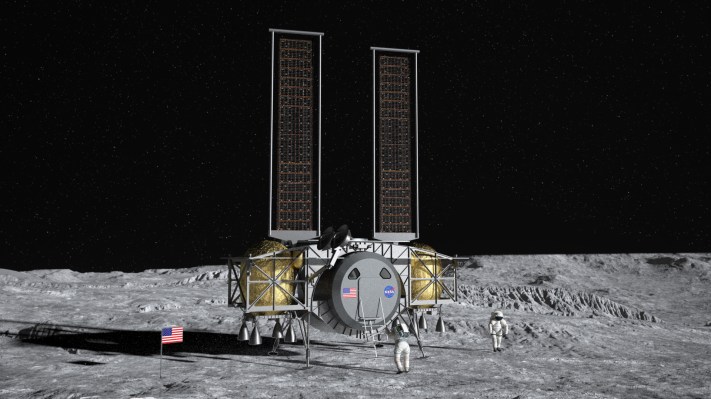The Human Landing System saga is far from over.
Senators on Monday released a draft version of the appropriation bill that governs NASA’s budget for fiscal year 2022, directing the agency to select two teams for the Human Landing System (HLS) program — but only giving the agency an additional $100 million to do so.
The total funding for the program would stand at $1.295 billion, with NASA receiving an overall budget of $24.83 billion for the next fiscal year.
“Using this funding, NASA is expected to ensure redundancy and competition, including robust support for research, development, testing, and evaluation for no fewer than two HLS Teams,” the draft bill says. “The [Senate appropriations] Committee expects real investments in development rather than additional studies.”
The directive is clear. What’s not clear is how NASA expects the agency to fund two HLS teams without a commensurate increase in funding.
First, a little refresher: The HLS is a critical part of NASA’s Artemis program, which aims to return humans to the moon for the first time since the Apollo space program days. Back in April, NASA selected Elon Musk’s SpaceX — and only SpaceX — to develop the landing vehicle for astronauts under Artemis. The company beat out defense contractor Dynetics and Blue Origin, which developed a “national team” that included aerospace primes Lockheed Martin, Northrop Grumman and Draper, for the award.
In the past, NASA had generally operated by choosing at least two vendors to encourage competition, and as a hedge in case one company’s project doesn’t pan out. That was how it operated with the Commercial Crew program for the International Space Station, when NASA awarded both SpaceX and Boeing contracts to build astronaut transport spacecraft. So, it’s fair to say that the agency did veer from historical precedent in selecting only SpaceX.
Since April, Blue Origin has mounted a campaign protesting NASA’s decision, first by disputing the contract award to government watchdog the Government Accountability Office and then — when GAO rejected the company’s protest — via a complaint filed in a federal claims court.
NASA maintains that it selected SpaceX because the company offered the most robust lander proposal at the lowest price, given budgetary constraints: only $2.9 billion, compared to the price tags of Blue Origin’s proposal ($5.9 billion) and Dynetics ($9 billion). Given the significant difference in cost between the three proposals, it’s unclear how the Senate’s increase to the HLS program –which is only $100 million — will enable NASA to select an additional team.
NASA administrator Bill Nelson seems confident that the agency will eventually get the funding it needs. “I think at the end of the day, after all the shouting is over, after all the pushing and tugging, a lot of which has nothing to do with NASA, you will see that NASA will have the funds that it needs,” he said in an interview with SpaceNews,
According to the bill, “having at least two teams providing services […] should be the end goal of the current development program.” If this version of the bill makes it into the final budget — which is unclear, as it would still need to be negotiated with the House — NASA would have 30 days to explain to Congress and the public how it plans to comply with the new directive.
